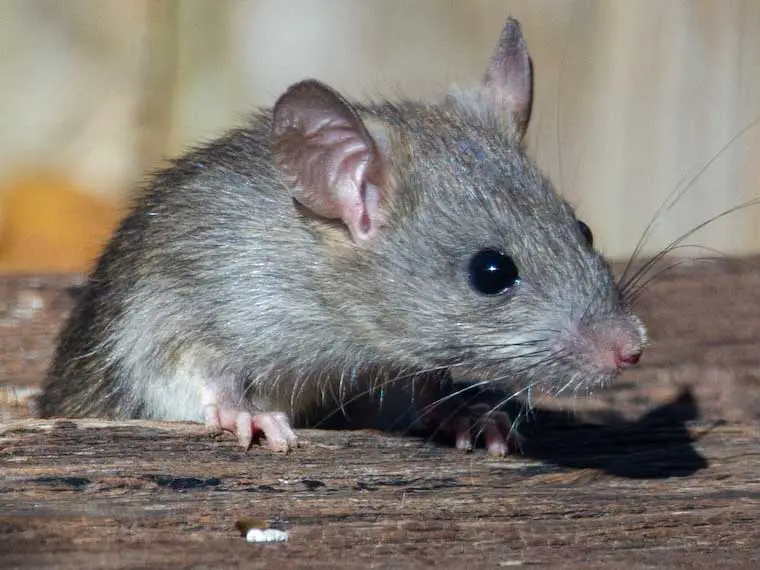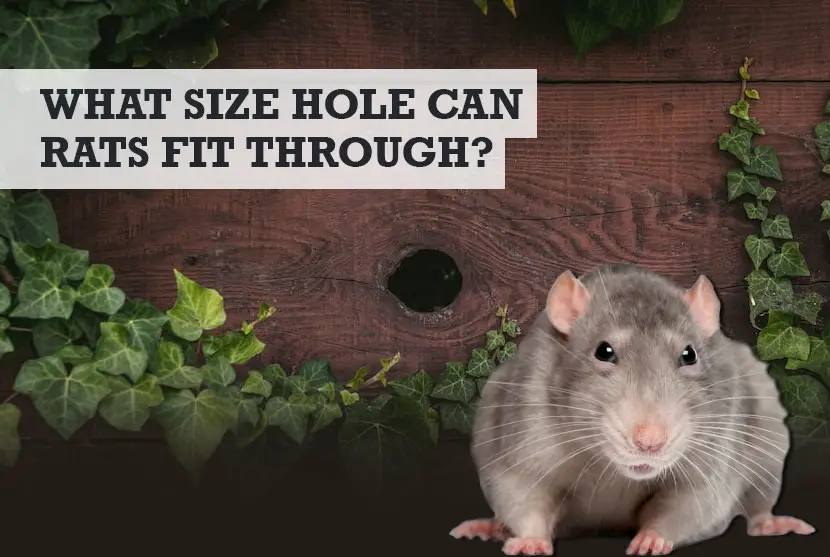Over the last few years, we’ve had a persistent problem of rats digging under the fence at the rear of our backyard and coming onto the property. They then tend to dig rat tunnels along the fence line and then reach the decking attached to the back of our house.
Once they got under the decking, my fear was they might be able to get into a small hole at the rear of our house. Rats are very agile, and can squeeze through small gaps, so I sealed everything.
But I didn’t have to, because at the time I didn’t know what size hole a rat can fit through. However, I did research it, and found out the following:
The average sized rat can squeeze through small holes as tight as 1 inch (25mm) wide. Smaller rats could even fit through small holes 20mm wide. How big of a hole can a rat fit through will depend on the size of their ribcage and head.
Sounds crazy doesn’t it, but it’s true.
The smallest hole a rat can get through is one that is big (or small enough) for their ribcage or head to fit through. The rat will push its head through the hole first, using its whiskers to measure the width.
If the rat estimates that his ribcage will fit through the small gap, he will proceed by contorting and collapsing the bones in the rest of his body to get through.
Rats can compress their skeletons and collapse their lets to make themselves flat. This then lets them squeeze through small gaps and holes.

But they cannot collapse their ribcage (and definitely not their skulls), because they rely on the internal organs to be able to breathe. So, the size hole can a rat get through will be determined by whether their ribcage and head fits.
This might mean very small rats can fit through holes as small as 20mm (0.8 inches).
How big is the average rat ribcage or head?
Given that how small a hole a rat go through in your roof or walls will depend on what type of rats you are dealing with – and how big their heads or ribcages are.
Here are common rodent types, and the size of their skulls on average.
- Average sized rat skull: 20mm (0.8 inches) wide
- Average sized mouse skull: 11mm (0.4 inches) wide
What this means for you as a homeowner, is you should take the necessary steps to stop rats getting into your backyard. Once they are on your property digging holes and tunnels, the next phase could be under your house, given how warm and cosy it is.
I’ve previously published step-by-step guides which how to identify rat holes in your yard when compared to other critters such as moles and squirrels.
Once you stop them coming into your backyard and digging holes, you can then address holes in your roof and attic space. Below explains how.
How do you seal a rat hole?
Before you consider sealing up the small holes that rats are squeezing through to get into your home, you need to get them out of the roof space or out from under the house. If you seal with them still in, they will either chew more holes to escape, or die in there leaving a terrible smell.
Rats are most active at night when they leave their nests to get food. Once you see them leave, you can seal the holes. Alternatively lay traps and poison.
If you decide to use humane rat traps like these on Amazon, take the rats at least a couple of miles from your home and away from residential areas to release them.
Popular methods for sealing rat holes include:
- Stainless steel mesh or steel wool
- Sheet metal
- Aluminum flashing
These are harder to chew through and are ideal for sealing larger holes that rats get through.
You can then use cement, caulk or foam sealant to seal any smaller gaps. With caulk and foam, you can easily paint over them, so it doesn’t always notice.
What size mesh can a rat fit through?
If you decide to use mesh, you might want to think again. As I’ve established, rats can squeeze through tight spaces that are on average no bigger than an 1 inch wide.
Don’t use mesh unless it’s smaller than half an inch wide to be completely certain rats can’t squeeze through.
Can rats chew through mesh though?
Rats cannot chew through steel mesh if it’s strong enough. However, mesh such as chicken wire often won’t be strong enough to stop rats chewing through. Most rodents can chew through it.
Instead, I recommend galvanized mesh and something more heavy duty.
How big can a rat hole be?
I’ve seen rats dig holes as big as 3 to 4 inches wide in my yard. You can see photos of the big holes that rats dig in these guides:
Can a rat fit through 1 inch chicken wire?
Some very small rats will be able to get their head through 1 inch chicken wire, so get chicken wire that has smaller gaps in it.
Can a rat fit through a ¼ inch hole?
The average rat should not be able to fit through a small ¼ inch hole. However, baby rats and smaller rodents could be able to squeeze through gaps this narrow.
Can rats fit under doors?
Rats can fit under doors if the gap is small enough. As established, rats can get through small holes and spaces that are the same size or bigger than their ribcage. This means a very small rat could possibly fit under a door with a 20mm gap.
More backyard guides…
- Can squirrels get through small holes in your roof?
- Comparing vole holes vs rat holes
- Can rats flatten their bodies to get under doors
Image of hole in fence via https://unsplash.com/photos/0nrmAqGABJ0


